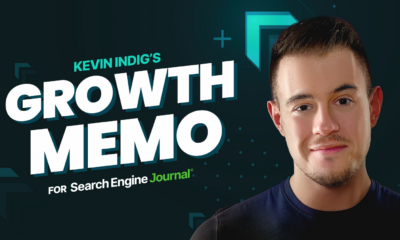TECHNOLOGY
Reimagining the Role of the CIO in the Hybrid Era

As businesses increasingly adopt hybrid working models, the role of the CIO is also evolving.
In the hybrid era, the CIO must not only manage technology infrastructure but also ensure seamless collaboration and communication between remote and on-site teams.
They must also lead efforts to integrate new technologies, such as cloud computing and AI, while ensuring data security and compliance. Additionally, the CIO should work closely with other C-suite executives to align technology initiatives with business goals and drive digital transformation across the organization. The CIO’s role in the hybrid era is critical to the success and resilience of modern businesses.
In part one of this two-part special available here we explored the vectors of change effecting the evolution of the CIO, and key issues and opportunities including addressing the data paradox, moving from data management to data centricity and value and democratizing the capacity to create and build. Concluding this series, we now move onto exploring the criticality of Human Centred Leadership and Power of the Ecosystem, Skills Based Organisation and share final thoughts and reflections for application across business and societal outcomes.
Human Centred Leadership and Power of the Ecosystem
Humans are at the centre of catalysing data-centricity, empowering the insight engine which unlocks the value of operational, customer and market data, so how can we support them best? Employees want to work for organisations with shared value alignment, where they feel they belong, where employers care for them as well as those around them as corporate citizens, and where they are actively listened too and able to contribute. And as emphasised by research by the C Tanner Institute, it is the accumulation of all the small experiences employees encounter during every working day that makes the most impact, not one off initiatives or interventions.
A great example of addressing this comes from EY’s award-winning NextWave Elevator Challenge, developed in conjunction with Ogilvy to help connect the NextWave strategy to its global workforce – recognising this would only be actualised if the whole company understood and personally connected to delivering on it.
The result? A gamified, 90-minute team challenge and social experience built in an immersive 360-degree viewable game environment, centred around co-creation to optimise impact across different cultures and geographies, and all built around the strategic pillars of NextWave, namely Client, People, Social and Financial. This approach showcases that it is not just the capacity to deliver business transformation with the power of people, data and technology that delivers results, it’s the way this is done, and the way that the story is told that matters so much too, both internally and externally. A disruptive distinctive creative clearly delivers impact!

And taking this human-centred approach further still, is embedding the power of ecosystem collaboration and co-creation. For me, one of the biggest learning lessons of the pandemic is the increased resonance of ‘coming together’ for good as exemplified by projects like the HPC Consortium where organisations that traditionally competed, worked together to enable inspirational innovation advances in healthcare, notably vaccine development. This approach or mindset even, can be applied across multiple verticals, and to address many different challenges. It is perhaps then no wonder that it is now estimated that ecosystems enabled by digital platforms may unlock an eye-watering $100 trillion of value for businesses over the next decade. And with EY finding that some 88% of executives indicate they are leveraging ecosystems in their tech-enabled transformation plans, this is a trajectory set to gather increased momentum still.
Skills Based Organisation
The World Economic Forum anticipates that over half of all employees (54%) will require significant re-skilling to meet IT-related needs. This equates to a need to reskill more than a billion people by 2030. Reflecting on this and completing the catalysts for change covered in this piece, comes the shift towards becoming a skills-based organization and with this, a broadening focus on what skills requirements actually matter the most.
As data becomes increasingly democratized to a greater range of employees, especially business users to apply in self-service analytics, this is contributing to what I refer to as ‘the rise of the generalist’ – that is the amassing of increasingly holistic skill sets, complemented by one or two predominating skills as singular areas of expertise. The dynamic and holistic needs, challenges and opportunities facing organisations today necessitates employees with a breadth of knowledge, skills and experience, and also the skills confidence to apply them.
And when organisations combine this approach with adopting a data fabric strategy, this results in a significantly reduced need for human intervention to actually analyse and manage data – a range of 40-90% in the EY study – meaning burnout potential is negated and more time is afforded for higher value learning and development. And these employees need opportunity and recognition too, absolutely critical components to developing an inclusive culture of belonging, especially in areas like training. Indeed, the leading three barriers to digital transformation success were recently identified as related to ‘people factors’, most significantly around digital skills access, readiness and confidence (Dell Technologies 2022).
Further, developing a skills based organisation is vital when we consider expanding talent gaps in the technology sector. Putting this into context, in the UK alone, there were over 64,000 vacancies for technology roles in Q3 last year, according to a State of the Nation report from the BCS, The Chartered Institute for IT – this equates to an eyewatering 191% increase on the same period in 2020. Access to training matters, with a recent study by SAS that I was actively involved in, finding that 87% of employees report they are less likely to leave their employer if provided training opportunities. This includes aspects such as data literacy training for those in non-technology facing roles.

This is compounded by intention-action gaps when it comes to skills such as AI. As an example, the same research found investment in Artificial Intelligence technology increasing, yet investment in the talent to apply it, significantly lacking. As I discuss in related press coverage, ways to address include enabling on-the-job experiential training, increasing upskilling and cross-skilling opportunities, encouraging certifications and broadening talent outreach, for example with hackathon challenges, a timely example of this here. Additionally, visibility matters – it is critical for people to see ‘someone like me’ when exploring opportunities in technology. For inspiration, an example of showcasing the diversity of talent and skills needed to thrive in tech is the 365 Series, designed with the aim of breaking down barriers to access and changing the narrative on what a career in tech actually ‘looks like’.
Investment and prioritization of human capability is then an absolute imperative. I believe this encapsulates a focus on STEAM skills, namely Science, Technology, Engineering, Arts and Mathematics to help foster holistic skill sets, including empathy, creativity, emotional intelligence and problem-solving skills. We need to evolve the predominant focus on what to think and what to learn, and now move beyond to the how – and with an increasingly personalised approach as one size does not fit all! One example is embedding a process called metacognition into training and development programs – think of it as going to the gym but for your brain! This approach can help employees and managers alike to understand their respective learning and leadership styles and how they learn best to become smarter thinkers – more agile, ambidextrous and confident to change.
Final Thoughts
The CIO role is rightly becoming increasingly elevated and strategic. As organisations from SME to enterprise alike move beyond the rapid implementation of changes borne out of necessity, as exemplified by the pandemic catalyst, we have now entered an ‘embed by design’ phase, where digital transformation is more reflective, mature and critically – intentional. And it is empowered by focus, investment and prioritization around the 3 pillars of data centricity, human-centred leadership and skills-based organisation described in this piece, with all the considerations explored to optimise impact for business and society too.
And the results of getting this right speak for themselves! Tech-enabled transformations that exceed expectations now forecast an average annual revenue growth of 5.7% (EY 2022) – this compares to just 4.0% for transformations where delivery on expectations falls short. In combination, I hope this deep dive inspires further reflection and all feedback and questions are most welcomed! Additionally, for more on these very themes, EY’s Tech Horizon research and thought leadership are freely available to be explored in depth. All feedback and follow-on questions are most welcome. Many thanks, Sally
Research Notes and Additional Info *
Gartner, Becoming Composable: A Gartner Trend Insight Report, Yefim Natis, Janelle Hill, Partha Iyengar, Gene Alvarez, Jennifer Loveland and Chris Howard, 12 January 2023
GARTNER is a registered trademark and service mark of Gartner, Inc. and/or its affiliates in the U.S. and internationally and is used herein with permission. All rights reserved
IDC Research, How to be a Digital Leader in 2022, Develop Your Digital Quotient To Be Successful on Your Cloud Journey. Europe and North America Info-Briefs, Francesca Ciarletta, Carla Arend, Archana Venkatraman and Frank Della Rossa.
IDC RESEARCH is a registered trademark and service mark of International Data Group Inc and/or its affiliates in the U.S. and internationally and is used herein with permission. All rights reserved
About the Author
Prof. Sally Eaves is a highly experienced chief technology officer, professor in advanced technologies, and a Global Strategic Advisor on digital transformation specializing in the application of emergent technologies, notably AI, 5G, cloud, security, and IoT disciplines, for business and IT transformation, alongside social impact at scale, especially from sustainability and DEI perspectives.
An international keynote speaker and author, Sally was an inaugural recipient of the Frontier Technology and Social Impact award, presented at the United Nations, and has been described as the “torchbearer for ethical tech”, founding Aspirational Futures to enhance inclusion, diversity, and belonging in the technology space and beyond. Sally is also the chair for the Global Cyber Trust at GFCYBER.
TECHNOLOGY
Next-gen chips, Amazon Q, and speedy S3

AWS re:Invent, which has been taking place from November 27 and runs to December 1, has had its usual plethora of announcements: a total of 21 at time of print.
Perhaps not surprisingly, given the huge potential impact of generative AI – ChatGPT officially turns one year old today – a lot of focus has been on the AI side for AWS’ announcements, including a major partnership inked with NVIDIA across infrastructure, software, and services.
Yet there has been plenty more announced at the Las Vegas jamboree besides. Here, CloudTech rounds up the best of the rest:
Next-generation chips
This was the other major AI-focused announcement at re:Invent: the launch of two new chips, AWS Graviton4 and AWS Trainium2, for training and running AI and machine learning (ML) models, among other customer workloads. Graviton4 shapes up against its predecessor with 30% better compute performance, 50% more cores and 75% more memory bandwidth, while Trainium2 delivers up to four times faster training than before and will be able to be deployed in EC2 UltraClusters of up to 100,000 chips.
The EC2 UltraClusters are designed to ‘deliver the highest performance, most energy efficient AI model training infrastructure in the cloud’, as AWS puts it. With it, customers will be able to train large language models in ‘a fraction of the time’, as well as double energy efficiency.
As ever, AWS offers customers who are already utilising these tools. Databricks, Epic and SAP are among the companies cited as using the new AWS-designed chips.
Zero-ETL integrations
AWS announced new Amazon Aurora PostgreSQL, Amazon DynamoDB, and Amazon Relational Database Services (Amazon RDS) for MySQL integrations with Amazon Redshift, AWS’ cloud data warehouse. The zero-ETL integrations – eliminating the need to build ETL (extract, transform, load) data pipelines – make it easier to connect and analyse transactional data across various relational and non-relational databases in Amazon Redshift.
A simple example of how zero-ETL functions can be seen is in a hypothetical company which stores transactional data – time of transaction, items bought, where the transaction occurred – in a relational database, but use another analytics tool to analyse data in a non-relational database. To connect it all up, companies would previously have to construct ETL data pipelines which are a time and money sink.
The latest integrations “build on AWS’s zero-ETL foundation… so customers can quickly and easily connect all of their data, no matter where it lives,” the company said.
Amazon S3 Express One Zone
AWS announced the general availability of Amazon S3 Express One Zone, a new storage class purpose-built for customers’ most frequently-accessed data. Data access speed is up to 10 times faster and request costs up to 50% lower than standard S3. Companies can also opt to collocate their Amazon S3 Express One Zone data in the same availability zone as their compute resources.
Companies and partners who are using Amazon S3 Express One Zone include ChaosSearch, Cloudera, and Pinterest.
Amazon Q
A new product, and an interesting pivot, again with generative AI at its core. Amazon Q was announced as a ‘new type of generative AI-powered assistant’ which can be tailored to a customer’s business. “Customers can get fast, relevant answers to pressing questions, generate content, and take actions – all informed by a customer’s information repositories, code, and enterprise systems,” AWS added. The service also can assist companies building on AWS, as well as companies using AWS applications for business intelligence, contact centres, and supply chain management.
Customers cited as early adopters include Accenture, BMW and Wunderkind.
Want to learn more about cybersecurity and the cloud from industry leaders? Check out Cyber Security & Cloud Expo taking place in Amsterdam, California, and London. Explore other upcoming enterprise technology events and webinars powered by TechForge here.
TECHNOLOGY
HCLTech and Cisco create collaborative hybrid workplaces

Digital comms specialist Cisco and global tech firm HCLTech have teamed up to launch Meeting-Rooms-as-a-Service (MRaaS).
Available on a subscription model, this solution modernises legacy meeting rooms and enables users to join meetings from any meeting solution provider using Webex devices.
The MRaaS solution helps enterprises simplify the design, implementation and maintenance of integrated meeting rooms, enabling seamless collaboration for their globally distributed hybrid workforces.
Rakshit Ghura, senior VP and Global head of digital workplace services, HCLTech, said: “MRaaS combines our consulting and managed services expertise with Cisco’s proficiency in Webex devices to change the way employees conceptualise, organise and interact in a collaborative environment for a modern hybrid work model.
“The common vision of our partnership is to elevate the collaboration experience at work and drive productivity through modern meeting rooms.”
Alexandra Zagury, VP of partner managed and as-a-Service Sales at Cisco, said: “Our partnership with HCLTech helps our clients transform their offices through cost-effective managed services that support the ongoing evolution of workspaces.
“As we reimagine the modern office, we are making it easier to support collaboration and productivity among workers, whether they are in the office or elsewhere.”
Cisco’s Webex collaboration devices harness the power of artificial intelligence to offer intuitive, seamless collaboration experiences, enabling meeting rooms with smart features such as meeting zones, intelligent people framing, optimised attendee audio and background noise removal, among others.
Want to learn more about cybersecurity and the cloud from industry leaders? Check out Cyber Security & Cloud Expo taking place in Amsterdam, California, and London. Explore other upcoming enterprise technology events and webinars powered by TechForge here.
TECHNOLOGY
Canonical releases low-touch private cloud MicroCloud

Canonical has announced the general availability of MicroCloud, a low-touch, open source cloud solution. MicroCloud is part of Canonical’s growing cloud infrastructure portfolio.
It is purpose-built for scalable clusters and edge deployments for all types of enterprises. It is designed with simplicity, security and automation in mind, minimising the time and effort to both deploy and maintain it. Conveniently, enterprise support for MicroCloud is offered as part of Canonical’s Ubuntu Pro subscription, with several support tiers available, and priced per node.
MicroClouds are optimised for repeatable and reliable remote deployments. A single command initiates the orchestration and clustering of various components with minimal involvement by the user, resulting in a fully functional cloud within minutes. This simplified deployment process significantly reduces the barrier to entry, putting a production-grade cloud at everyone’s fingertips.
Juan Manuel Ventura, head of architectures & technologies at Spindox, said: “Cloud computing is not only about technology, it’s the beating heart of any modern industrial transformation, driving agility and innovation. Our mission is to provide our customers with the most effective ways to innovate and bring value; having a complexity-free cloud infrastructure is one important piece of that puzzle. With MicroCloud, the focus shifts away from struggling with cloud operations to solving real business challenges” says
In addition to seamless deployment, MicroCloud prioritises security and ease of maintenance. All MicroCloud components are built with strict confinement for increased security, with over-the-air transactional updates that preserve data and roll back on errors automatically. Upgrades to newer versions are handled automatically and without downtime, with the mechanisms to hold or schedule them as needed.
With this approach, MicroCloud caters to both on-premise clouds but also edge deployments at remote locations, allowing organisations to use the same infrastructure primitives and services wherever they are needed. It is suitable for business-in-branch office locations or industrial use inside a factory, as well as distributed locations where the focus is on replicability and unattended operations.
Cedric Gegout, VP of product at Canonical, said: “As data becomes more distributed, the infrastructure has to follow. Cloud computing is now distributed, spanning across data centres, far and near edge computing appliances. MicroCloud is our answer to that.
“By packaging known infrastructure primitives in a portable and unattended way, we are delivering a simpler, more prescriptive cloud experience that makes zero-ops a reality for many Industries.“
MicroCloud’s lightweight architecture makes it usable on both commodity and high-end hardware, with several ways to further reduce its footprint depending on your workload needs. In addition to the standard Ubuntu Server or Desktop, MicroClouds can be run on Ubuntu Core – a lightweight OS optimised for the edge. With Ubuntu Core, MicroClouds are a perfect solution for far-edge locations with limited computing capabilities. Users can choose to run their workloads using Kubernetes or via system containers. System containers based on LXD behave similarly to traditional VMs but consume fewer resources while providing bare-metal performance.
Coupled with Canonical’s Ubuntu Pro + Support subscription, MicroCloud users can benefit from an enterprise-grade open source cloud solution that is fully supported and with better economics. An Ubuntu Pro subscription offers security maintenance for the broadest collection of open-source software available from a single vendor today. It covers over 30k packages with a consistent security maintenance commitment, and additional features such as kernel livepatch, systems management at scale, certified compliance and hardening profiles enabling easy adoption for enterprises. With per-node pricing and no hidden fees, customers can rest assured that their environment is secure and supported without the expensive price tag typically associated with cloud solutions.
Want to learn more about cybersecurity and the cloud from industry leaders? Check out Cyber Security & Cloud Expo taking place in Amsterdam, California, and London. Explore other upcoming enterprise technology events and webinars powered by TechForge here.
-

 SEARCHENGINES5 days ago
SEARCHENGINES5 days agoBillions Of Google goo.gl URLs To 404 In The Future
-
SEARCHENGINES4 days ago
Daily Search Forum Recap: July 22, 2024
-

 SEARCHENGINES7 days ago
SEARCHENGINES7 days agoGoogle Core Update Coming, Ranking Volatility, Bye Search Notes, AI Overviews, Ads & More
-

 SEO5 days ago
SEO5 days ago11 Copyscape Alternatives To Check Plagiarism
-

 SEO6 days ago
SEO6 days agoGoogle Warns Of Last Chance To Export Notes Search Data
-
SEARCHENGINES3 days ago
Daily Search Forum Recap: July 23, 2024
-

 AFFILIATE MARKETING6 days ago
AFFILIATE MARKETING6 days agoThe Top 5 AI Tools That Can Revolutionize Your Workflow and Boost Productivity
-

 SEO4 days ago
SEO4 days agoSystem Builders – How AI Changes The Work Of SEO













